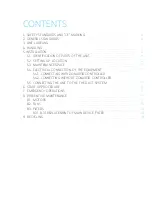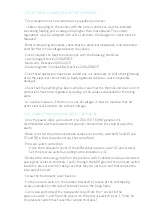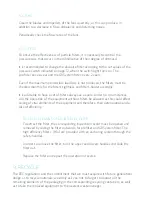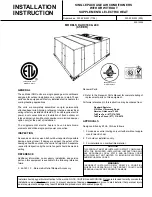
5.7 CONNECTION TO CONDUIT NETWORKS
The equipment will never serve as support or structure for the conduits.
The connection of the equipment to the air ducts must be made through flexible
connections to avoid the transmission of vibrations to the installation.
It must be checked that the entrance and the air impulsion are not obstructed
or that no obstacle is preventing the good circulation of the latter. If these
requirements are not met, the efficiency of the system will be affected.
6. SETTING UP PROCEDURE
All access panels to the equipment must be closed before proceeding to the start-up
It must be checked that the ground connection is properly connected.
·
Connect the external switch to the unit, keeping the control switch of the unit off.
Once this has been done, check that the voltage at the electrical input terminals of
the equipment corresponds to the characteristics established on the rating plate (the
minimum tension allowed should be 10 % lower than the nominal voltage indicated on
the rating plate).
·
The fan will not start if the duct network is not completely closed, since the
connection of the fan without load can cause over-currents that could damage the
motor . This same effect can occur if the requested static pressure is greater that the
losses of load produced in the pipeline network. To solve this act on the flow control
gates by closing them, in order to produce a greater load loss.
·
Connect the external switch and stop it a few moments later.
·
Check that the direction of rotation of the motors coincides with that established by
the manufacturer (observe the direction of rotation marked on the fan). If the direction
of rotation is not correct swap two of the force phases. To carry out this operatio ,
disconnect the equipment control switch and the power switch, once this has been
done, swap the phases.
·
Check the direction of rotation and if no strange noise is observed, reconnect the
equipment .
·
The rotation speed of the fan and the motor must be checked through a tachometer.
·
With the equipment running, check the intensities absorbed by each electrical
element, checking that the intensity does not exceed the limit values of each one.
It must be also verified that there are no lags between the intensities that circulate
through each line, unless the monophasic electrical components cause it.
·
The total intensity absorbed by all the equipment must be checked, also checking
that there are no lags between the currents of the different lines.




































